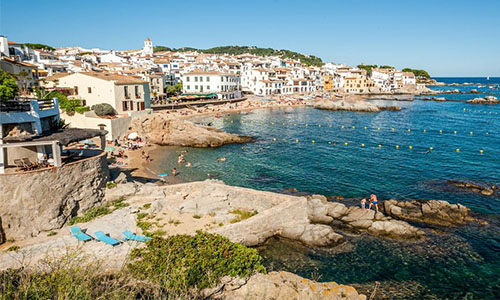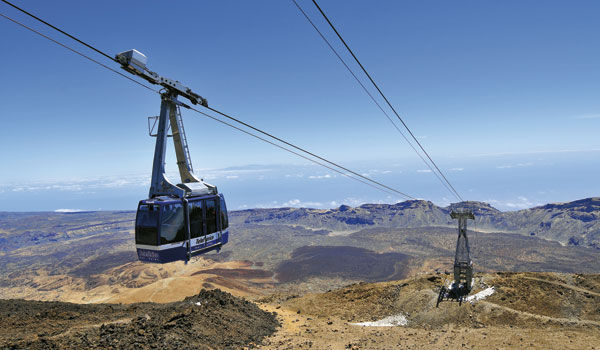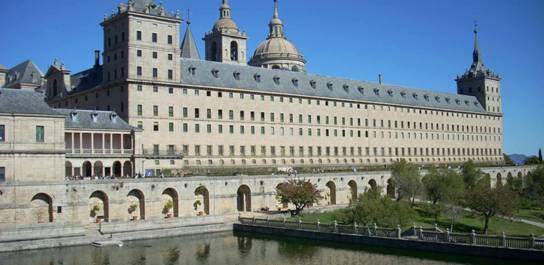
Barcelona, Tarragona, and Sitges: A Catalan Triangle Adventure
This travel guide details a captivating circular route starting and ending in Barcelona, venturing south to the ancient Roman capital of Tarragona, and returning via the charming coastal town of Sitges. This journey offers a perfect blend of metropolitan energy, profound history, and relaxed Mediterranean seaside life, providing a comprehensive taste of Catalonia's diverse offerings.
Part 1: Barcelona - The Vibrant Capital
Barcelona, the heart of Catalonia, is a city of boundless creativity, Gothic alleyways, and modernist masterpieces. It's a place where the pace is fast, the food is inventive, and the architecture defies expectation.
Key Attractions in Barcelona
La Sagrada Família: Antoni Gaudí's unfinished masterpiece is more than a church; it's a symbol of Barcelona. The sheer scale and detail of the facades, depicting the Nativity, Passion, and Glory, are staggering. Inside, the forest of tree-like columns and the kaleidoscopic effect of the stained-glass windows create an ethereal atmosphere.
Practical Tip: Book tickets online weeks in advance for a specific time slot to avoid immense queues. An audio guide or guided tour is highly recommended to understand the symbolism.
Park Güell: Another of Gaudí's whimsical creations, this park feels like stepping into a fairy tale. The colorful trencadís (broken tile mosaics) on the famous serpentine bench and the lizard statue at the entrance are iconic. The views over the city from the main terrace are spectacular.
Insight: The "Monumental Zone" requires a paid ticket, but the surrounding forested areas of the park are free to access.
Gothic Quarter (Barri Gòtic): Get lost in the labyrinthine streets of the old city. Discover the Barcelona Cathedral, quiet plazas like Plaça Reial, and remnants of the Roman wall. This area is best explored on foot without a strict itinerary.
Las Ramblas: The city's most famous boulevard is a vibrant, crowded, and theatrical promenade stretching from Plaça de Catalunya to the Christopher Columbus Monument at the port. While it's a must-see, be vigilant for pickpockets.
Casa Batlló & La Pedrera: For a deeper dive into Modernisme, visit these two Gaudí-designed residential buildings on the Passeig de Gràcia. Casa Batlló, with its skeletal facade, is fantastical, while La Pedrera's undulating stone facade and surreal rooftop chimney park are equally impressive.
Food & Drink in Barcelona
Barcelona's culinary scene is a mix of traditional tapas bars and avant-garde restaurants.
Tapas: Head to El Raval or Gràcia neighborhoods for authentic tapas bars. Try
patatas bravas (fried potatoes with spicy sauce),
pimientos de padrón (fried green peppers),
jamón ibérico (cured ham), and
pan con tomate (bread with tomato).
Paella: Seek out a reputable restaurant for an authentic paella, traditionally eaten for lunch on Sundays. Avoid places with picture menus on Las Ramblas.
Markets: Visit La Boqueria Market off Las Ramblas for a sensory overload of fresh produce, juices, and seafood stalls. For a more local experience, try Mercat de Santa Caterina.
Vermut: Join the locals in the ritual of having a vermouth (vermut) before lunch, often accompanied by small snacks.
Transportation in & out of Barcelona
Barcelona has an excellent and efficient public transport system including the Metro, buses, and trams. The T-casual ticket (formerly T-10) offers 10 journeys on all zones and is cost-effective. For travel to Tarragona, the best options are:
Train: High-speed AVE or regional Rodalies trains (R16 line) depart frequently from Barcelona-Sants or Passeig de Gràcia stations. The journey takes between 30 minutes (AVE) to 1 hour 15 minutes (Rodalies).
Bus: Companies like Alsa also run services, which can be slightly cheaper but slower.
Part 2: Tarragona - The Roman Echo
A short journey south of Barcelona lies Tarragona, a city where ancient history is woven into the fabric of modern life. As the former capital of Roman Hispania, Tarraco, its archaeological remains are a UNESCO World Heritage Site and offer a profound glimpse into the past.
Key Attractions in Tarragona
The Roman Amphitheatre: Dramatically located by the Mediterranean Sea, this 2nd-century amphitheatre once hosted gladiatorial contests. Imagine the spectacles with the sea as a backdrop. You can walk through the stands and see the excavated underground areas.
The Pont del Diable (Devil's Bridge): This massive Roman aqueduct, located just outside the city center in a wooded park, is an incredible feat of engineering. Walking across the top tier is a breathtaking experience.
Practical Tip: It's about a 30-minute walk from the city center, or you can take a local bus.
The Praetorium and Roman Circus: This complex allows you to explore the underground vaults of what was once a massive circus for chariot races. The Praetorium tower connects the circus to the Provincial Forum and offers panoramic views of the city.
The Balcony of the Mediterranean (Balcó del Mediterrani): This scenic viewpoint along the Rambla Nova offers stunning vistas over the sea, the amphitheatre, and the port. It's a local tradition to touch the iron railing for good luck.
Tarragona Cathedral: A beautiful blend of Romanesque and Gothic architecture, built on the site of a former Roman temple. The cloister is particularly peaceful, with orange trees and intricate stone carvings.
Food & Drink in Tarragona
The cuisine here is heavily influenced by the "Costa Daurada" (Golden Coast) and its rich fishing tradition.
Romesco Sauce: A must-try local specialty from nearby Tarragona. This rich, nutty, and slightly spicy sauce made from nyora peppers, almonds, and garlic is typically served with fish or with
calçots (a type of giant spring onion) during the winter festival.
Seafood: Enjoy incredibly fresh seafood. Look for restaurants in the Serrallo fishing district for the best experience. Try
suquet de peix (a Catalan fish stew) or grilled whole fish.
Wine: The Tarragona region has its own Denominació d'Origen (DO) for wine. Sample robust reds from the Priorat region just inland, which are world-renowned.
Transportation in & out of Tarragona
The city center is very walkable, with most Roman sites concentrated in the Part Alta (Upper Town). To get to Sitges, you can take a regional Rodalies train (R16 line) northbound. The journey is picturesque, following the coastline, and takes about 30-45 minutes.
Part 3: Sitges - The Coastal Charm
Sitges provides a perfect contrast to Tarragona's ancient gravitas. This elegant coastal town, just southwest of Barcelona, is known for its beautiful beaches, vibrant festival culture (including its famous Carnival and Sitges Film Festival), and a welcoming, open-minded atmosphere.
Key Attractions in Sitges
The Beaches: Sitges has 17 beaches! The main ones, like Sant Sebastià and La Fragata, are centrally located and family-friendly. For a more relaxed vibe, walk west to the "Quiet Beaches" (Platges de l'Aiguadolç i del Racó) or east to Playa de las Balmins, which is clothing-optional.
The Old Town (Casc Antic): A delightful maze of narrow, white-washed streets filled with boutiques, art galleries, and restaurants. It's perfect for a leisurely stroll away from the beach.
Cau Ferrat Museum: The former home-and-studio of artist Santiago Rusiñol, a key figure in Catalan Modernism. It houses his collection of art, including two El Grecos, as well as ironwork and ancient artifacts. The building itself is a work of art.
The Church of Sant Bartomeu & Santa Tecla: Perched on a promontory overlooking the sea, this iconic church is the symbol of Sitges. The view from its steps at sunset is unforgettable.
The Maricel Museum: Located next to Cau Ferrat, this museum offers a fantastic collection of art from the 10th to 20th centuries in beautifully decorated rooms with sea views.
Food & Drink in Sitges
Sitges offers everything from casual beachfront chiringuitos (beach bars) to upscale dining.
Xató: A definitive local dish, especially during winter. It's a salad of endives, salt cod, and tuna, dressed with a rich and nutty *xató* sauce (similar to romesco).
Beachfront Dining: Enjoy a leisurely lunch at one of the many restaurants along the Passeig Marítim. While they can be touristy, the people-watching and sea views are part of the experience.
Cava: The Penedès region, just inland from Sitges, is one of Spain's premier wine regions, famous for its Cava (Spanish sparkling wine). Many local bars and restaurants offer excellent selections by the glass.
Transportation from Sitges back to Barcelona
Sitges is exceptionally well-connected to Barcelona. The R2S Rodalies train line runs frequently from Sitges station to Barcelona-Sants, Passeig de Gràcia, and El Clot-Aragó stations. The journey takes approximately 35-40 minutes, making it an easy day trip or a perfect final stop before flying home.
A Sample 5-Day Itinerary
Day 1 & 2: Barcelona Immersion. Dedicate two full days to Barcelona. Day one for Gaudí (Sagrada Família, Park Güell). Day two for the historic center (Gothic Quarter, Las Ramblas, a market visit).
Day 3: Journey to Antiquity in Tarragona. Take a morning train to Tarragona. Spend the day exploring the Roman Amphitheatre, Circus, and Praetorium. Walk along the Balcony of the Mediterranean and have dinner in the Serrallo district. Overnight in Tarragona.
Day 4: Coastal Bliss in Sitges. Take a mid-morning train from Tarragona to Sitges (approx. 45 mins). Check in, hit the beach, explore the old town, and enjoy a spectacular sunset from the steps of Sant Bartomeu church. Overnight in Sitges.
Day 5: Last Look & Departure. Enjoy a final morning swim or visit the Cau Ferrat Museum. After lunch, take the quick and easy train ride back to Barcelona for your flight or onward journey.
Practical Travel Tips & Cultural Insights
General Tips
Language: The official languages are Catalan and Spanish (Castellano). While English is widely spoken in tourist areas, learning a few basic phrases in Catalan (
"Bon dia" for Good morning,
"Gràcies" for Thank you) or Spanish will be greatly appreciated.
Timetable: Spaniards eat late. Lunch is typically from 2-4 PM, and dinner rarely starts before 9 PM. Adjust your schedule accordingly to experience restaurants at their most lively.
Siesta & Sundays: Many smaller shops still close for a siesta in the afternoon (approx. 2-5 PM), especially outside major city centers. Also, be aware that most shops are closed on Sundays.
Safety: Catalonia is generally very safe. However, be extremely vigilant against pickpockets in crowded areas like Las Ramblas, metro stations, and on public transport. Keep valuables secure and out of sight.
Tickets & Reservations
Book Major Attractions Online: For Sagrada Família, Park Güell Monumental Zone, and popular museums, book tickets online well in advance to secure your spot and skip long lines.
City Passes: Consider if a pass like the Barcelona Card (includes transport and museum discounts) makes financial sense for your planned itinerary.
Cultural Etiquette
The Catalan Identity: Catalonia has a distinct cultural identity and history. Be respectful and aware of local sentiments regarding politics and autonomy.
Greetings: It is common to greet people with a kiss on both cheeks among acquaintances.
Tipping: Tipping is not as expected as in some countries. Leaving small change or rounding up the bill is standard in bars and restaurants. A 5-10% tip is generous for exceptional service.
A journey through Barcelona, Tarragona, and Sitges offers an unparalleled taste of Catalonia's diversity—from architectural wonders and ancient stones to sun-drenched beaches and vibrant local culture. It's a trip that engages all the senses and leaves a lasting impression.


